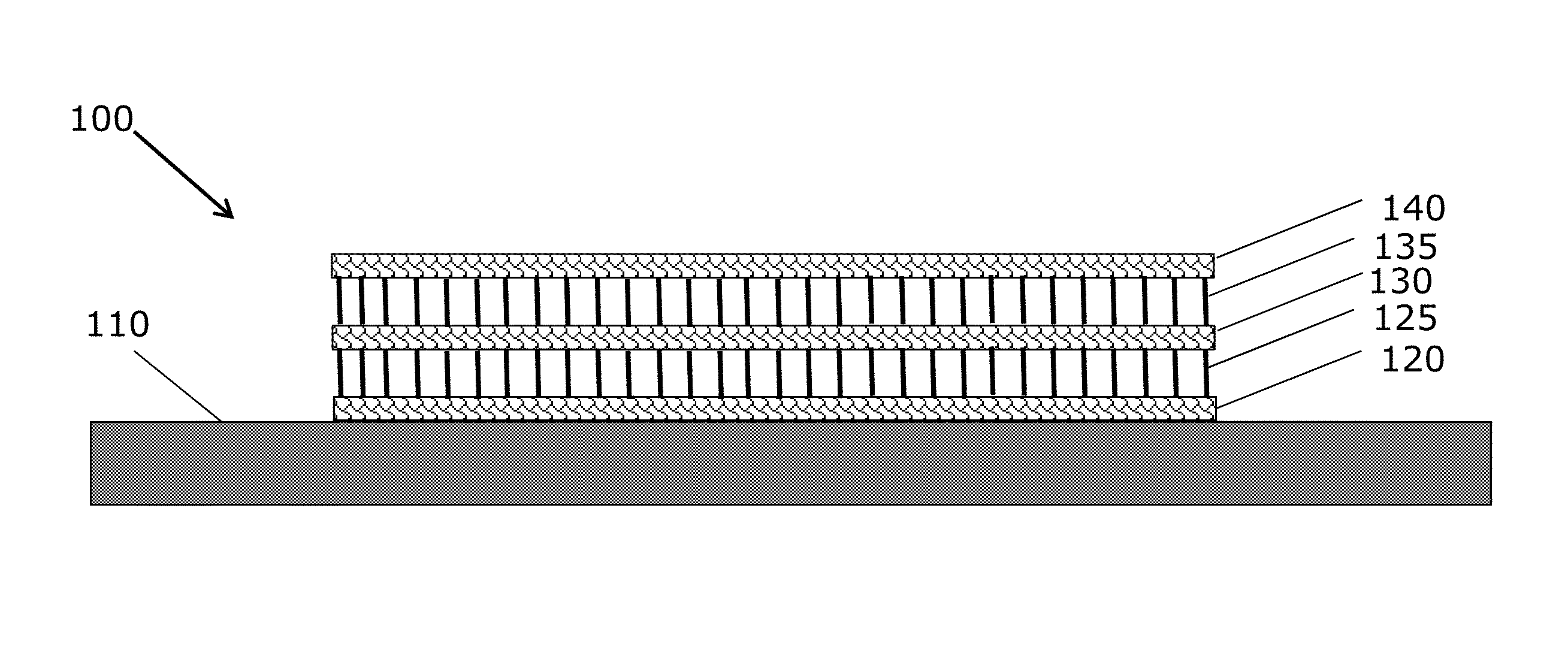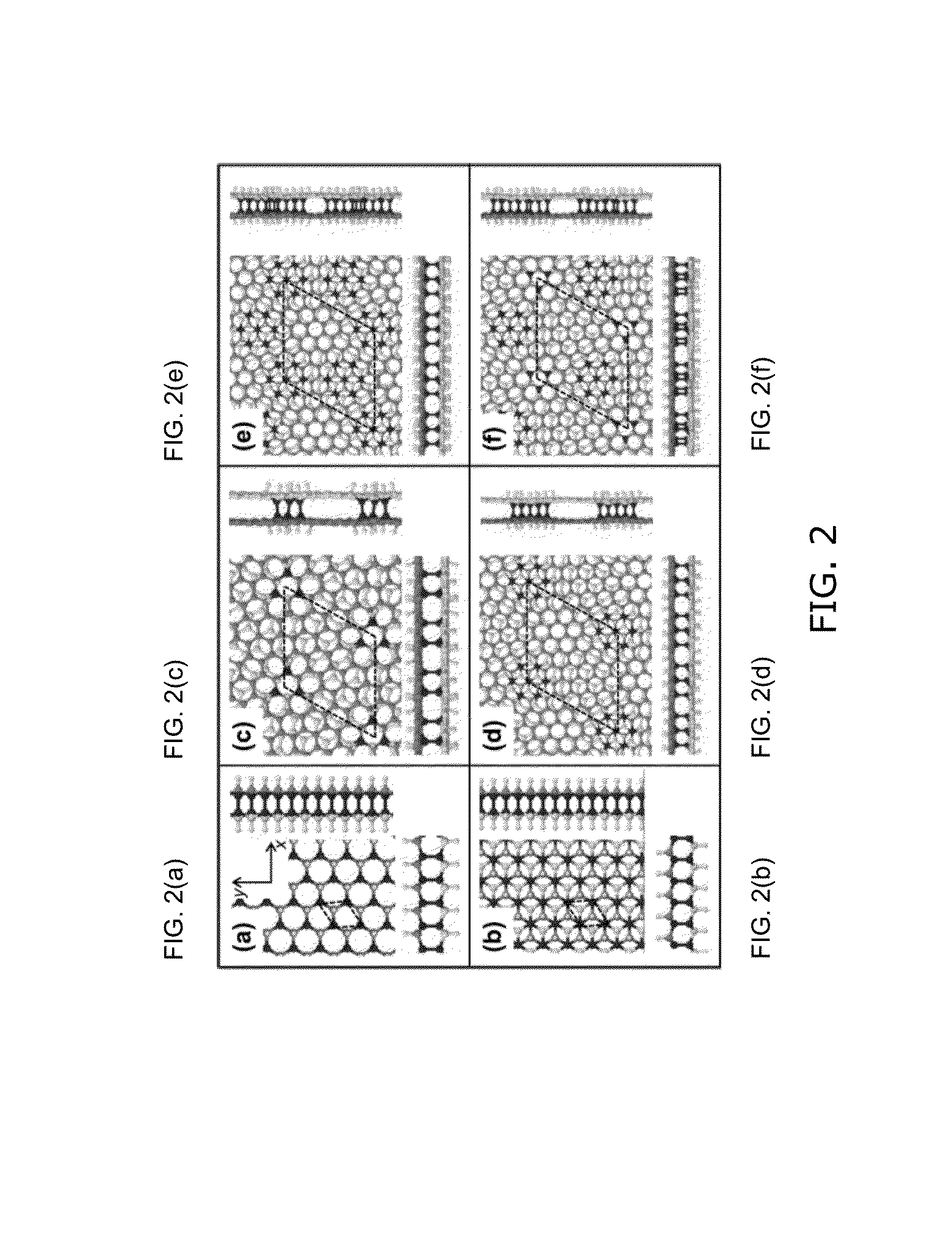Multilayer Graphene Structures With Enhanced Mechanical Properties Resulting From Deterministic Control Of Interlayer Twist Angles And Chemical Functionalization
a multi-layer graphene and twist angle technology, applied in the direction of carbon-silicon compound conductors, ceramic layered products, transportation and packaging, etc., can solve the problem of low shear strength of the stack, and achieve the effect of controlling mechanical properties
- Summary
- Abstract
- Description
- Claims
- Application Information
AI Technical Summary
Benefits of technology
Problems solved by technology
Method used
Image
Examples
Embodiment Construction
[0019]A description of example embodiments of the invention follows.
[0020]Guided by computational results, described below is a method of producing multi-layers of graphene (an atomically thin layer of carbon) with accurately controllable twist angles between subsequent graphene layers, and which after hydrogenation (or analogous functionalization) induce covalent bonding between consecutive graphene layers within the stack. This interlayer bonding results in dramatically higher shear strength for the multi-layer structure. Coupled with the tremendous tensile strength of graphene (10 times the strength of steel, for equivalent thicknesses), ultrathin but ultrastrong composite materials based on twisted and covalently bonded graphene multi-layers can be produced. Applications of such large area graphene multi-layers could include bulletproof vests with a thickness ranging from as low as a few microns to a few millimeters.
[0021]Researchers have been attempting to stack polycrystalline...
PUM
| Property | Measurement | Unit |
|---|---|---|
| Angle | aaaaa | aaaaa |
| Angle | aaaaa | aaaaa |
| Angle | aaaaa | aaaaa |
Abstract
Description
Claims
Application Information
 Login to View More
Login to View More - R&D
- Intellectual Property
- Life Sciences
- Materials
- Tech Scout
- Unparalleled Data Quality
- Higher Quality Content
- 60% Fewer Hallucinations
Browse by: Latest US Patents, China's latest patents, Technical Efficacy Thesaurus, Application Domain, Technology Topic, Popular Technical Reports.
© 2025 PatSnap. All rights reserved.Legal|Privacy policy|Modern Slavery Act Transparency Statement|Sitemap|About US| Contact US: help@patsnap.com



